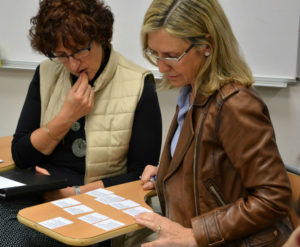Classroom Skills for Teaching Young Learners
This course is also available online
2 weeks
Course Length
Mon to Fri
Lesson Days
15 a week
Lessons
English
Language
B1
Minimum Level
Overview
The programme is great for teachers working in a primary school or language school who would like to revitalize their concepts to teach ages 6-11.
Classroom Skills for Teaching Young Learners focuses on techniques and methodology, including CLIL, which will help you to implement your teaching plans more effectively.
You will gain a deeper understanding of classroom management techniques and develop ways of introducing and practising a new language, and of encouraging young learner independence.
Completing this course will help you:
- To delve into your principles and beliefs
- To explore English and Content (CLIL)
- To assess activities and evaluate them
- To take a look at different media for teaching children.
Who is the course for?
Course Sample programme
Week 1 | Course Content |
Monday | Course expectations and your teaching context Introduction to resources |
Tuesday | Exploit flashcards for vocabulary, grammar and pronunciation Content and language integrated learning CLIL v. ELT |
Wednesday | Guided writing – Getting over the fear of the blank page Different writing techniques for younger learners |
Thursday | Using stirrers and settlers in the classroom management Motivation and discipline |
Friday | Managing behaviour – The use of praise in the classroom – Useful error correction techniques |
Week 2 |
|
Monday | Helping learners with their oral communication skills Vocabulary games with aims |
Tuesday | Using drama in the classroom and Total Physical Response activities Songs and chants |
Wednesday | Creative ideas for the classroom, display different ways to decorate your classroom Phonics Helping your learners with difficult sounds |
Thursday | Story-telling: Looking at popular children’s storybooks – Grammar Giggles – Games to recycle grammar |
Friday | Using Cuisenaire rods with young learners – Using technology in the classroom – Ideas and useful websites |
*Please note that the course content may be subject to change due to latest methodology trends updates.
1 lesson=45mins
Share This Class:
What people are saying



More Courses
You might also be interested in these courses

Technology for Language Teachers
Technology for Language teachers is aimed at teachers who want to use more technology in the classroom to enhance the learning experience of their students…

Teaching for Exam Classes
Teaching for Exam Classes is for English teachers who are preparing teenage or adult students for exams. Preparing to teach Cambridge or IELTS exam class. London…

Pronunciation and Performance with an expert “Adrian Underhill”
Pronunciation and Performance with an expert is a course led by a world-renowned ELT Consultant and Trainer. Adrian Underhill is an author and the series…

Practical Teacher
Practical Teacher is suitable for teachers who want a practical programme that covers developing resources, practical ideas and methods to liven up classrooms…

Life in Britain
Life in Britain is for teachers interested in finding out about modern British culture. The topics will be taught using a communicative methodology…

Language Development and Teaching Skills
Language Development and Teaching Skills Course is suitable for teachers who want to develop their own knowledge and use of English for the classroom…
Methodologies

Total Physical Response
Total Physical Response is considered to be an excellent way of learning vocabulary. Moreover, since it is based on commands, the students can easily learn the meaning of the words in the target language.

The Structural Approach
This method is based on the opinion that it is imperative to understand the structures of the language. Understanding the complexities of the structures of the sentences in a language is more important than learning the vocabulary of the language.

The Direct Method
This method primarily focuses on the development of oral skills. One of the most important characteristic feature of this method is that visual materials and real-life objects are used. Moreover, such an oral training helps in reading and writing. There is no translation involved in this method.
